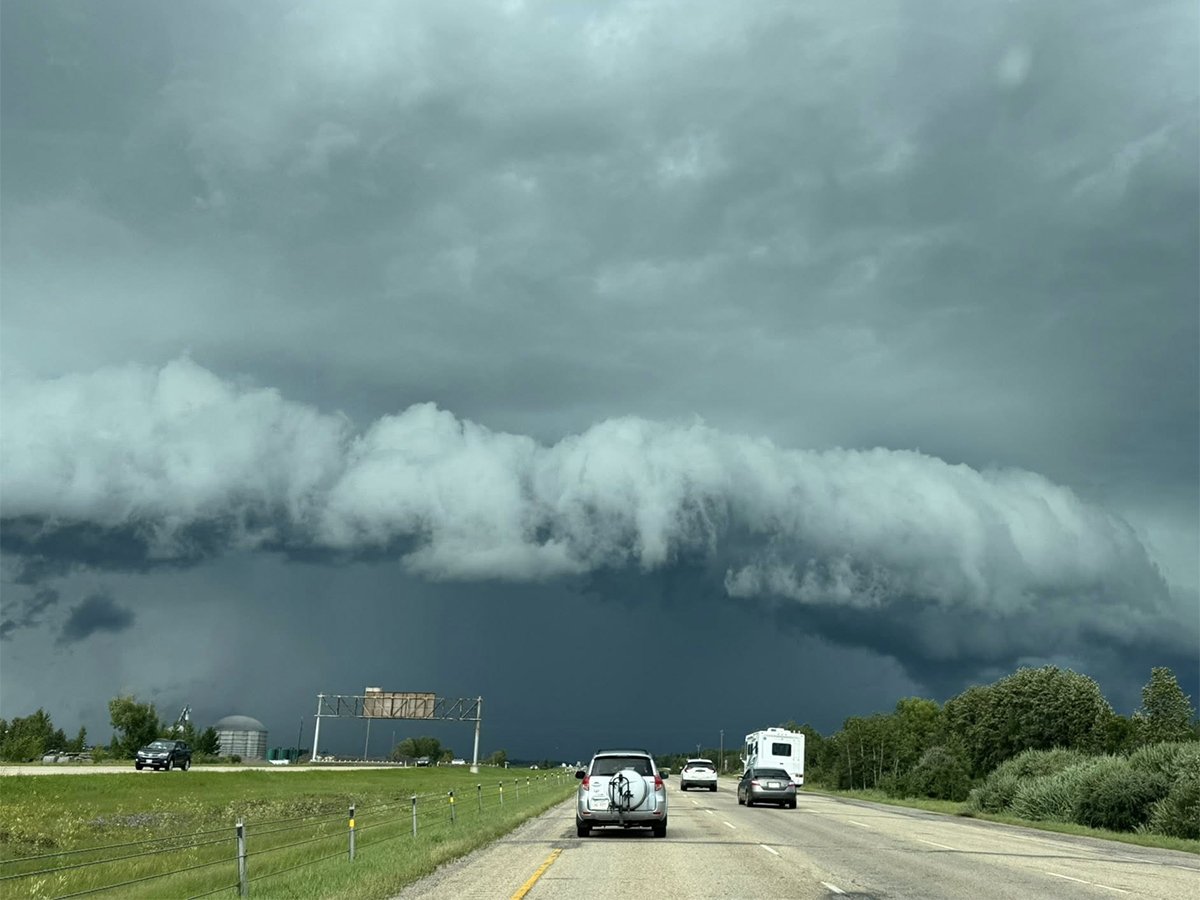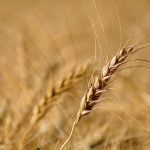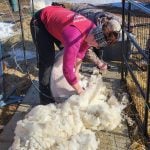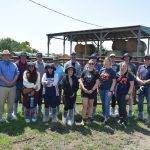HEAD SMASHED IN BUFFALO JUMP, Alta. — Humbling.
That’s how Alberta bison producers described their Aug. 10 visit to the world heritage site that has preserved the artifacts, culture and lore surrounding bison and their use by First Nations people.
Designated as a world treasure by UNESCO in 1981, Head Smashed In Buffalo Jump was used by Indians over a period of about 6,000 years to kill large numbers of bison.
Before the arrival of guns on the Prairies, running the animals off a cliff was the only way to harvest large numbers at once so their meat, hides and bones could be used for food, clothing and tools.
Read Also

Above average temperatures expected
July was a cooler than average month right across the Prairies, with most places coming in just slightly below average.
“It puts it in perspective, what we do today, despite all the modern tools and technology we have,” said Bison Producers of Alberta chair Thomas Ackermann.
“These people truly knew what they were doing and they were using the bison to the very, very last piece. I’m almost ashamed, actually, that we are just selling the meat.”
But there is a market for bison meat and little market for any other products once so treasured by ancient peoples.
Once numbering in the hundreds of thousands, bison were hunted almost to extinction in the mid-19th century. There are now about 100,000 in Alberta, the largest bison-producing province, and about 250,000 in Canada.
Ackermann said the BPA usually has its field days in central and northern Alberta, where most of Alberta’s bison are raised.
“The true history and the iconic place is actually down here,” he said.
“I think it’s very educational for us as people now living with the bison, hearing and learning about the history behind it. It’s humbling.
“And its important for people to have that background as well, because we claim not to be a livestock category as the traditional agriculture sectors, like hog farmers or dairy farmers. We’re still dealing with a wild animal.”
Peter Haase, a bison producer from Olds, Alta., echoed that sentiment.
“Part of the reason we’re in bison is because of the history of them, because they’re iconic and they’re the native animal here. They built the West,” Haase said.
Naturally raised meat from bison is part of the marketing strategy for the BPA and bison producers in general, Ackermann added.
Those qualities, combined with general consumer trends toward healthier eating, are working well for bison meat sales because more consumers are willing to pay a premium price for leaner meat without added hormones.
“We’re fitting right into that trend with the bison. We’re a perfect match.”
Ackermann said meat demand in Canada tends to be seasonal so the organization is working to create other products to maintain a consistent market. Bison smokies, different types of burgers and a bison jerky type of snack that includes fruit are among those being developed.
The market is consistently strong in Europe, however.
“People are very, very open to the special features of bison meat and the story behind it. That’s the key, selling the story of bison, the wide-open space, the grasslands, the history, the Natives, the heritage as a package.
“Sell it with the meat and people just love it,” said Ackermann.
The BPA is encouraging new entrants to bison production by developing webinars, providing mentorship and exploring options such as absentee ownership, in which people could own bison that are raised elsewhere.
Alberta has the only two federally inspected bison slaughter plants in Canada, one in Fort Macleod and the other in Lacombe. Federal inspection allows export sales.
However, plant location leads to the need for animal transport and the idea of shipping the wild animals over long distances is a concern for Ackermann.
Alberta plants are within reasonable distance for most prairie and B.C. bison producers, but economics sometimes encourage live shipments to Denver, Colorado.
“We try not to encourage that because in our opinion it creates some potential stress for animals that we shouldn’t expose them to.”
That is a major difference in how bison producers see themselves, Ackermann said.
“Raising bison and being involved, we are part of agriculture. However, we see ourselves not as typical cattle ranchers.
“We’re dealing with a wild animal so working with bison, we have the privilege of working with an animal that shows its instincts in the purest form.”
















